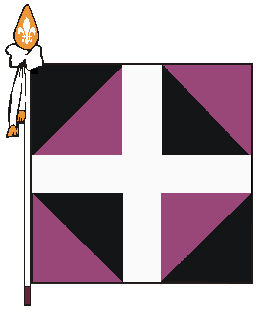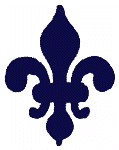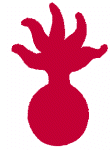
Article 14 of the 1779 Regulations:
The Small Equipment Which Each Soldier is Provided
**click the hyperlink above to see this issue as it is re-created today **
Visit the Gatinois on Facebook
Each Soldier will have 3 good shirts, 2 pairs of breeches, 2 pairs of shoes, which are new, a pair of gaiters of white toile, a pair in blackened toile, a pair of gaiters of black wool material, 2 pairs of cuffs for gaiters of white toile with black buttons, 2 handkerchiefs, 2 pairs of stockings, 2 neckstocks of dimity, a buckle for the neckstock, a pair of buckles for the shoes, a pair of buckles for the kneestraps, a bag of powder and a knot, a comb for arranging the hair, a comb to take the powder off, a brush for the coat and hat, 2 brushes for the shoes, a small brush for polishing the brass, a paintbrush for whitening the buff leather, a thimble for sewing, thread, needles, a buttonhook, a hairhook (hairpin), a priming wire (pick), a screwdriver, a piece of old cloth for rubbing spots/stains from the coat, and an old linen piece for cleaning arms.
The shirt, gaiters and cuffs for the gaiters will have marks of the letter affected by each company.
The Hats: The Hats are black with black lace trim and has some type of hook in the rear of the hat. This is so it can be versatile to fold down as a visor during times when the elements of weather are not so tender. A cord holding up the left side was usually black. The two ends of the ganse [the folds that makes the bicorn] are sewn to the upper crown on the left side. The loop is extended over the brim and attached to a button (commonly called the "gaiter button") sewn on the wing and affixed there. The ganse and cockade are then fixed a bit to the right. The ganse loop is just long enough to hold the cockade in place so that the button touches the cockade. Historically half of the hats were to be replaced each year.
The Cockade: The French wore a white cockade with the pleats spreading to the edges giving a "butterfly" effect. In addition to this cockade, in America, the French wore a small black cockade symbolizing the Franco-American Alliance over top of the larger white cockade. The black cockades were issued to the troops at sea and were received with some relief by the men who feared they might be going to the Caribbean, otherwise known as "the grave of the White man." At this time, there is debate on the evidence to support that a medium sized red cockade, the symbol of the Bourbon Alliance between France and Spain, was worn by the French troops in America. The only two sources that mention/show this is a self portrait of Jean-Baptiste Antoine de Verger, a sublieutenant in the Royal Deux Ponts regiment and in a Providence, RI letter written by an officer (July 22, 1780) made public in the newspapers, "the officers and soldiers wear cockades of three colors, emblematic of a triple alliance between France, Spain and America" (The French in Rhode Island, Magazine of American History, Vol., III, no 7, p.402.)
Pompoms: The regulations state that: “Above the cockade, the Grenadiers will wear a red wool pompom, two inches in diameter.” These pompoms were made of wool mounted on the stem of an iron wire which was bent so that the bend created an eye for attachment to a leather button sewn behind the brim of the hat. Chasseurs wore them as well, however the fusiliers had nothing similar, and they did not wear any pompoms.
Pokelum (Fatigue Hat): French soldats wore a fatigue hat when not on duty called a pokelum. This was a wool cap that was piped in the regimental facing color, had a wool brim and wool coverings that were rolled/folded up in good weather, and let down in bad weather. Hooks and eyes kept this wool curtain that cascaded off the cap close to the soldiers neck to keep in warmth and act as a barrier against the elements.
There has been much confusion on the use of a bonnet de police and the use of a Pokelum. Contrary to common use in the French re-enacting circles, they are not the same thing. A bonnet de police is a hat worn by soldats who are serving their duty as military police, which is a military provost in the french army, while a pokelum is a hat worn by off-duty soldats. To see an example of one, and how it differed from the 1776 regulations to the 1791 regulations, click here. And also here on a soldat from Régiment d’Artois in 1775 (Figure 2)
The Habit: (pronounced Hab-eet) The coat is a white wool coat, with white cuffs, and is faced in purple. It has purple piping on the collar, cuffs, pocket flaps and epaulettes (epaulettes on the soldat’s coat that is). On the turnbacks, the fleurs de lys are in purple for a fusiler, flaming red bombs if it’s for a grenadier, green hunting horns if it's for a chausseur. The sleeve and upper body lining was made with whatever was available, this was often a linen but could have been a wool shaloon or even silk.
They were made in small, medium and large sizes and were then tailored as required for an individual. The standard was for 7 small buttons on the lapels. However, because of the difference in size of the soldier, they often tailored the coats and some of them had 6 or 8 buttons instead of 7 in order to make the coat 'look' better on the man.
The pocket flaps on the Gatinois coat are vertical, not horizontal as in other coats of the period. As we are a white buttoned regiment in the French army, those units always had vertical pockets; yellow buttoned regiments have horizontal pockets. Also, those pocket flaps do not have functional pockets underneath them. The French habit had only one functional pocket and that was on the inside left of the coat. French soldiers carried everything in their hair on hide knapsacks.
There are 14 large buttons and 24 small buttons on the habit. They are numbered 18 as the Gatinois is the 18th regiment of the King. (The lower the number, the greater the honor/prestige of the unit.) It typically takes approximately one yard of violet wool for all the uniform's needs. Approximately three and a half yards are required for the habit. If the individual is of a larger size, then add a yard. Remember ... Les is more.
La Veste (sleeved waistcoat): This is a sleeved waistcoat made from a lightweight cotton canvas. It has a purple collar, white cuffs and worsted button holes. The French style on this is with the armpit areas removed for greater mobility. There are 8 buttons on the placket and 2 on each sleeve and 3 on each pocket. Buttons were white metal with the regimental number, in our case #18.
Le Gilet (waistcoat undergarment): This is a sleeveless white linen waistcoat, in identical cut to the la veste, (minus the sleeves of course) with white cloth buttons and is worn as an undergarment under la veste.
Gaiters: Soldiers will have at three pairs of gaiters at any one time, one white canvas, one black canvas, and one black wool. The white gaiters are for parades and last for only one year before they are replaced. The old white ones are then blackened by painting them with some mixture of oil, soot and pitch to make them waterproof, these are then used as the marching gaiters, and to be used on fatigue duty. The black wool gaiters are used in winter and in cold conditions.
Both white and black gaiters have cloth buttons. The number of covered buttons varies and is 20 to 24 for each gaiter depending on the owner's height.
The Regiment de Gatinois uses a 1.5 inch spacing, but according to the French regulations can be 1 inch to 1.5 inch.
Swords: The French used the model 1767 small sword and a later 1771. Officers had a small sword and usually carried a cane as well (especially majors and above) Lieutenants and Captains carried a fusil somewhat more refined than the men's.
Gorgets: All officers wore a Hausse Colonel gorget. The gorget had cords that attached it to the shoulder buttons (and not the top lapel button.)
Le Giberne (cartridge box): The box plates were with the Auvergne name on them as the Gatinois were made up from the Auvergne, 2nd and 4th battalions so their box plates still had the Auvergne name on them. There were never any box plates specifically authorized for the Gatinois. The bayonet was located on the box strap for fusilers and grenadiers. For corporals, sergeants and chausseurs, it was located in a double frog with the sword.
Bidon (canteen): The French soldier used two canteens in his daily life, a bidon and a petit bidon. The soldat carried the petit bidon on his person, but fetched water in the larger bidon to be used to fill his and his messmates petit bidons. One or two standard bidons would have been issued per mess. While a petit bidon is the best canteen, a standard bidon or stainless steel kidney canteen is also acceptable, along with leather covered flasks.
Messware: Soldiers are only issued with a bowl when they are in barracks, for the rest of the time they eat from the communal gamelle. They each take a mouthful in turn, if you are too slow then you miss your turn; apparently you have to develop a mouth of iron if you want your fair share because they will eat the food fast even if it is hot.
There are no regulation issue for knifes, forks, spoons, etc. Most soldiers would use their pocket knife for everything, including eating. Personal forks are rare, but you do find spoons used in archeological evidence/paintings. There is also reference to a mug called a "quart" because of the measure, the shape seems to be like the pot bellied tankards that you see in pewter, but we do not know what they were made of.
Types of Soldiers:
There were three main types of french troops - Fusilers, Grenadiers, and Chaussers.
Fusilers were the core line troops of a french regiment. Fusilers did not carry swords and carried the bayonet on the strap of the giberne unless they were a Corporal or Sargent which like the chaussers, carried it in a double frogged shoulder strap with the sword. Fusilers epaulettes were white, piped with the regimental facing color. If you look at our event pictures, most of the soldats shown are fusilers.
Grenadiers were the shock troops of the french army. With their tall bearskin caps and neat mustaches, they were used where additional force and intimidation was an asset in an engagement. They, like the chausseurs, were used on the flanks of an engagement, often working in conjunction with the chaussers in a pincer movement, with one force on the right flank and another on the left. Grenadiers, unlike their chausser counterparts, carried their bayonet on the strap of the giberne. Also, despite regulations attempting to eliminate their bearskin hats, they grew in popularity and use by this type of soldier throughout the AWI. The linked image above pictures a Sargent Major of Grenadiers in 1791, hence the fancy epaulettes on his shoulders. Only Grenadiers were allowed to wear the mustache, and so much so was it considered part of the uniform that Grenadiers who could not grow adequate facial hair on their own, would often paint them onto their faces for parades and battles. Grenadier epaulettes were red and piped in white
Chaussers were the light infantry troops of a french regiment. They were used on the flanks of the battlefield engagement often to probe the enemy, draw them out, and also to turn the flank of the enemy while the fusiliers engaged the enemies front. In the linked image above, there are several things of note. First, the way the sword and bayonet is carried in the double frog. Second, the chausser icon appears on the corner of the turnbacks in green. Third, the way the hair is worn, and last, the pom pom on the bicorn. This was how a chausser looked before 1789. Chaussers epaulettes were green and piped in white.
Sappers and Miners corps/Pioneer corps: There was also a number of specialty services within the french army. One of those was the Corps of Sappers and Miners. These were troops who felled trees, created bridges and roads for the army to move over. They were also the front line soldiers when a fortification or abatis was needed to be breeched. Armed with shovels and axes, they would charge the lines under heavy fire and clear the obstruction. These troops were identified by a pioneer crossed ax pattern on their shoulders of their habits. The patch was in black wool and was large enough to be seen at a good distance so the officers could direct them as to they were needed.
While this type of soldier was used throughout the french army, the regulations and dress often changed from regulation to regulation. Also, other foreign legion troops serving in the french army had different uniform regulations as well. Compare if you will, pictures of the Sappers of the Gatinois with the Grenadier-charpentier of the Régiment de Navarre in 1775 (figure 1). And contrast both, with the Suisses Gardes (Swiss Guards), where a Sapeur is pictured here (figure 6) with a Sargent des Grenadiers (figure 7) from 1780-1786.
Rank:
Epauletts for officers:
Capitine
L - solid silver w/ fringe
R - solid silver w/o fringe
Capitine en Seconde
L - silver w/red stripe & silver fringe
R - silver w/red stripe & no fringe
Lieutenant
L – zigzag diamond pattern & silver fringe
R - zigzag diamond pattern & no fringe
Sergeant
L & R (no epaulettes)
NCO had the white sewn in standard epaulette (at the neck side) with regimental facing
color piping the epaulette that was common to the enlisted man's coat.
Sergeant's left sleeve had a silver lace stripe sewn above the cuff of their uniform. It was about 1 inch or one pouce wide.
L & R (no epaulettes) same as Sergeant above
Corporal had a blue lace stripe stripe sewn above the cuff of their uniform.
It was about 1 inch or one pouce wide. Above that was two white cloth lace stripes sewn above the cuff;
also one inch wide and spaced about 1/2" apart.
Private
No distinguishing features to their uniforms. For an image of what a private looks like, most of the soldats shown on our events pages are privates.
SPECIAL INSIGNIA - For each 7 years of service, a Private or NCO got a stripe to wear on his left shoulder. These stripes were always in French blue and was in the form of an upside down V. These were accumulated and you could have as many as you could fit given your length of service. At 24 years you earned a red badge with crossed gold swords that you wore on the left breast.
Note the image on the left, in addition to being a seven-yeared soldier, he is also a corporal, as indicated by the insignia on his left sleeve.
CLICK HERE to see the evolution of the style of the French Uniform from 1720 to 1779





